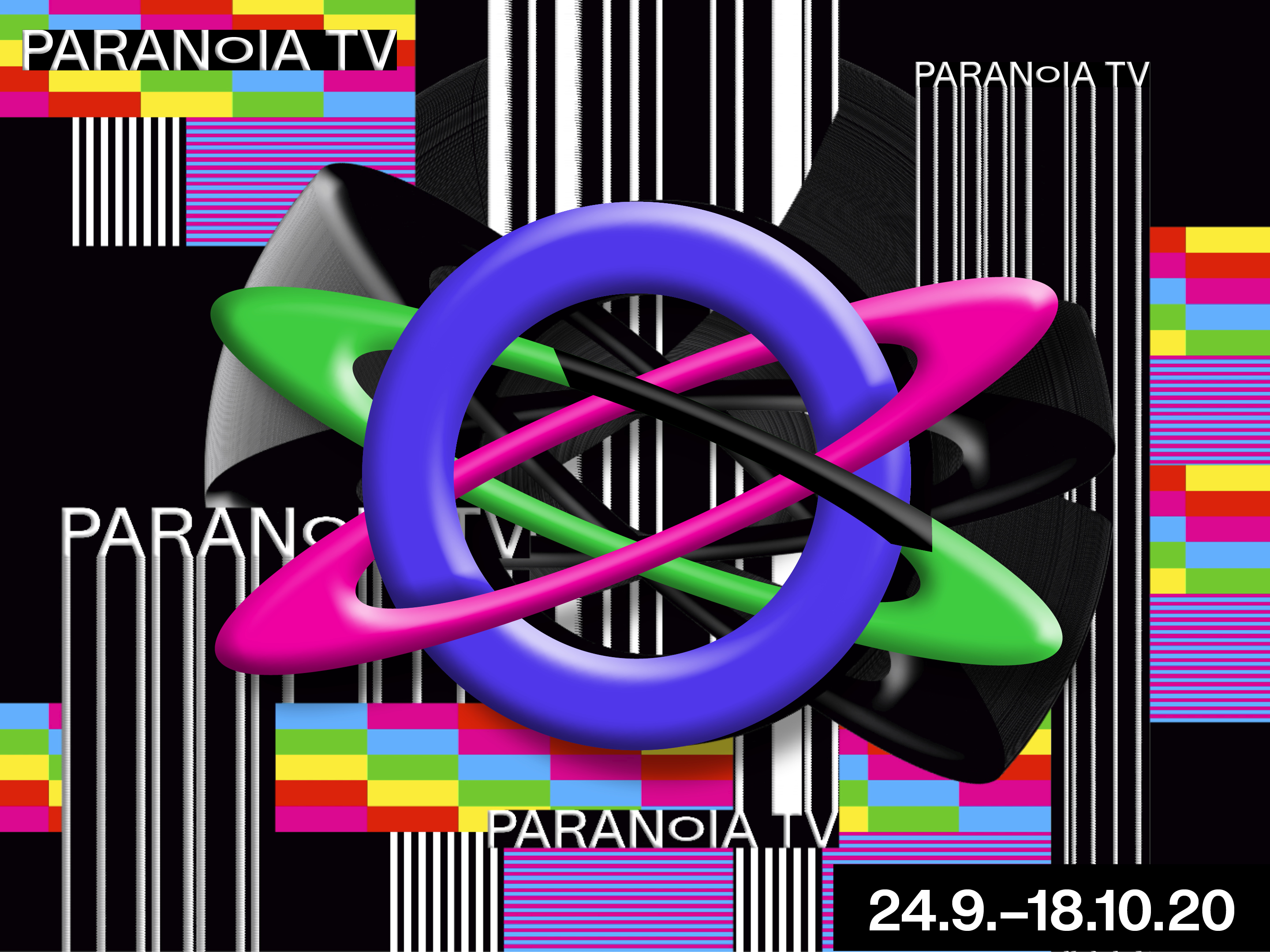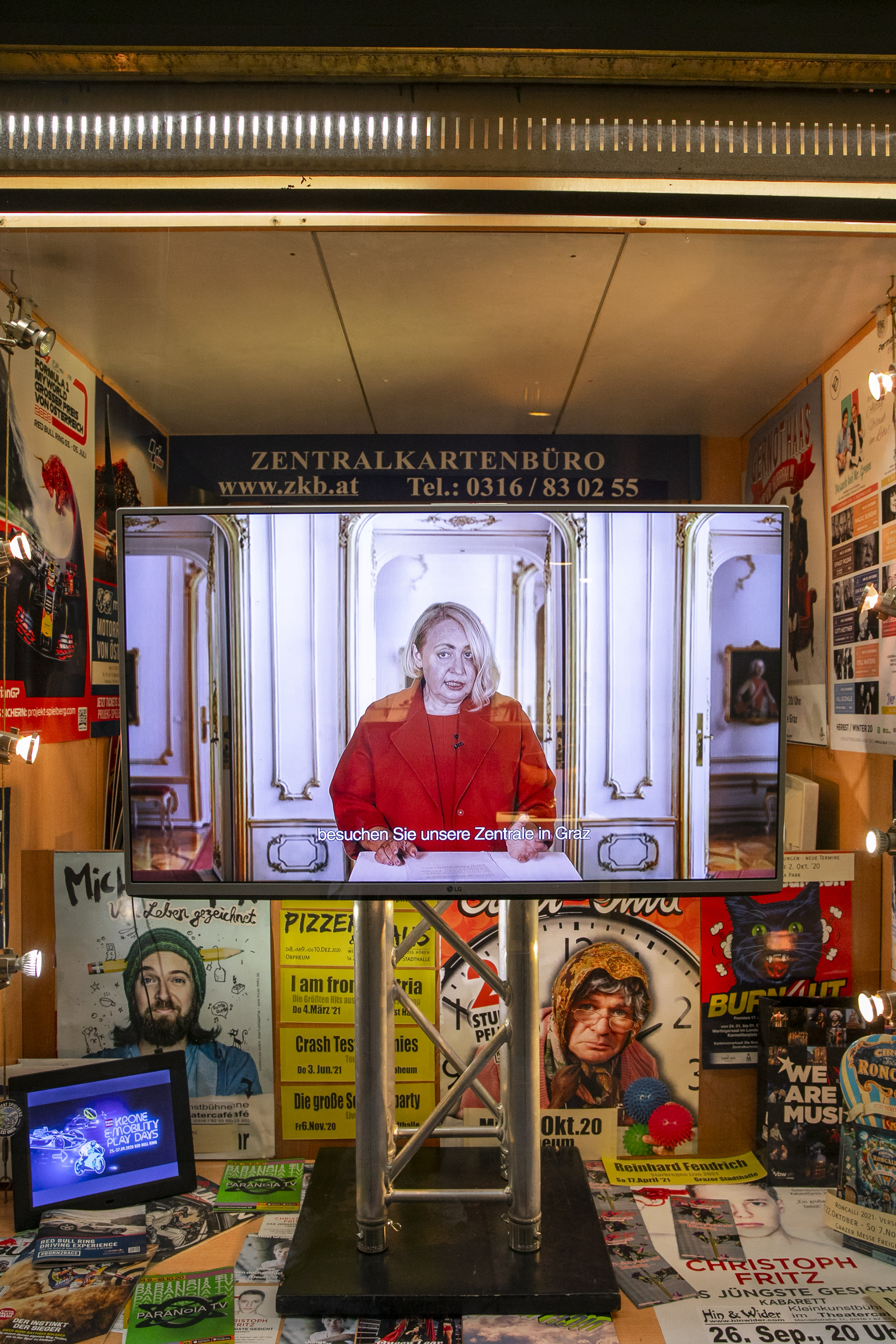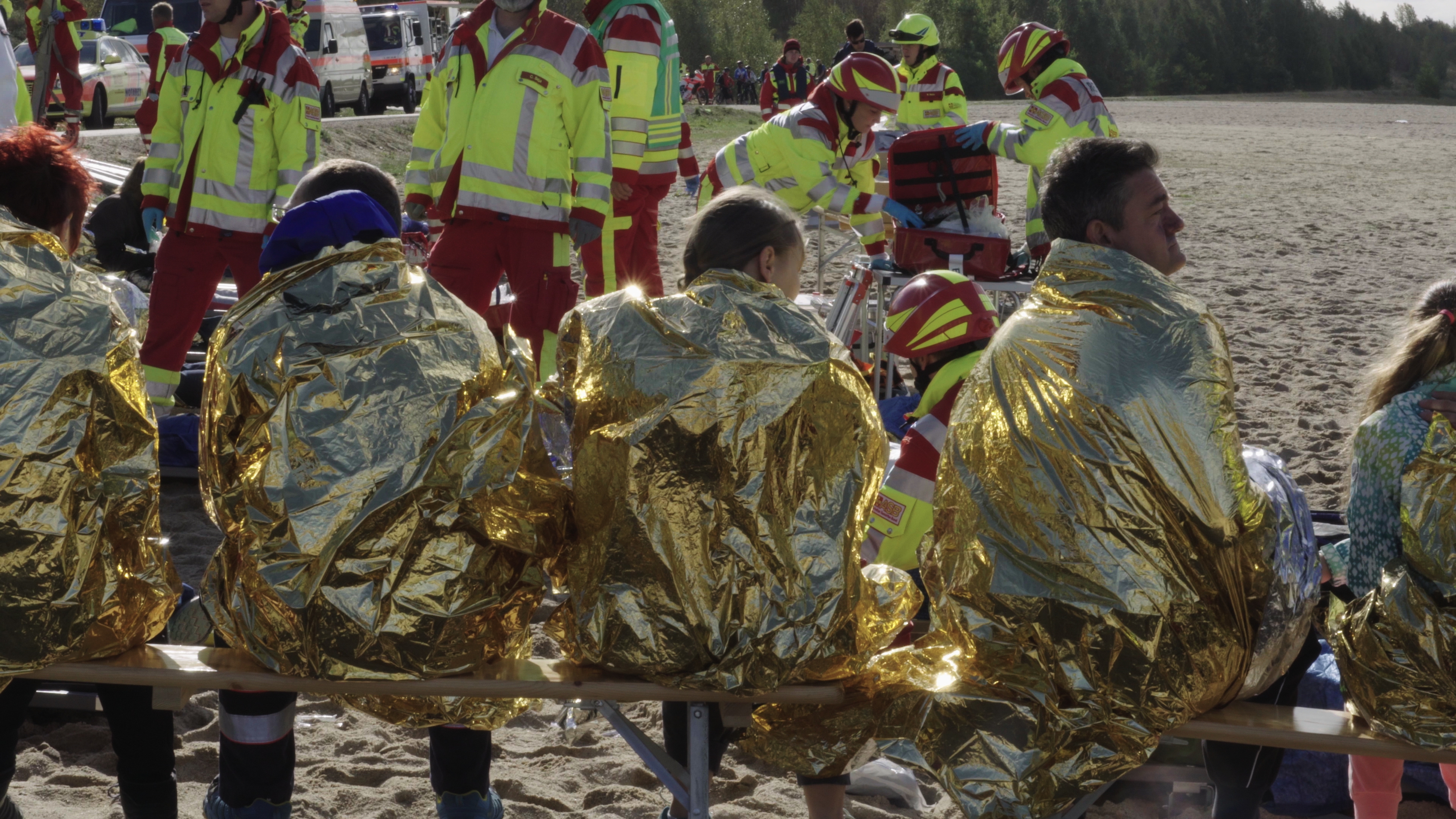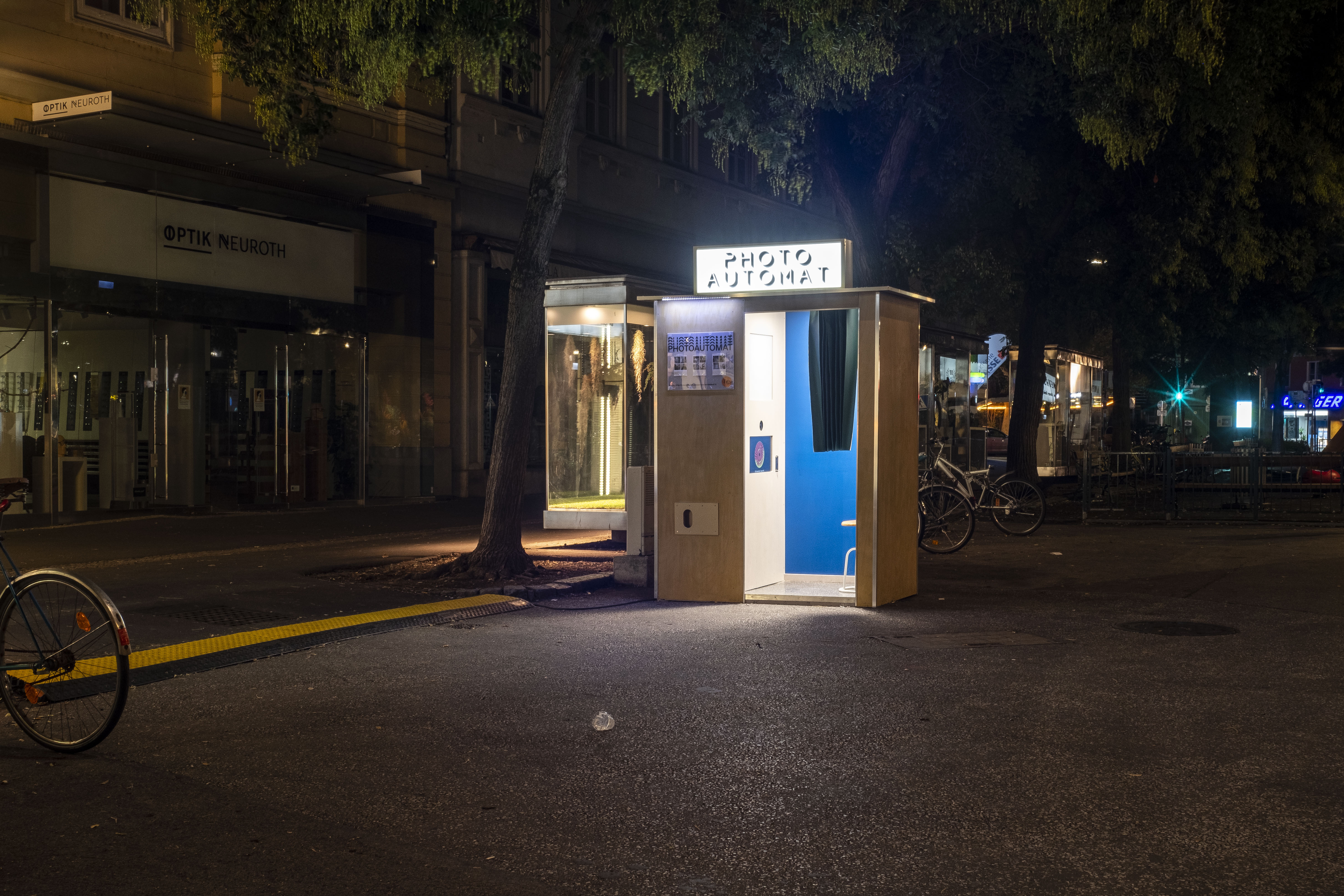 Paranoia
TV, Sujet: Grupa Ee
Paranoia
TV, Sujet: Grupa Ee
Steirischer
herbst has been held annually in Graz, Austria since 1968 and is one
of the oldest festivals for contemporary art in Europe. Like numerous
other biennials and festivals, the 2020 edition faced serious
programming challenges due to the COVID-19 pandemic. But unlike many
other exhibitions and events that were cancelled, postponed or
streamed online, artistic director Ekaterina Degot and her team
created a format in spite of lockdown measures and restrictions.
The
latest edition centers on an experimental programme entitled Paranoia
TV. Developed as a TV-compatible
format, it featured newly commissioned works specially conceived for
the medium including films and TV series, online games or news and
talk shows, which could be viewed on www.paranoia-tv.com or via an
app. Paranoia TV focuses thematically on the feelings of fear and uncertainty
triggered by the pandemic. At a time when news programming provides
the window to the world and streaming services the distraction from
that very world, Paranoia TV explores these popular media and their discourses. In line with the
etymological meaning of paranoia, the curatorial-artistic dimension
casts doubt on the desire for normality, necessarily confronting its
audience with the question: what is the normal state we actually want
to return to?
![]()
Opening
speech by director Ekaterina Degot, displayed on screens throughout
the city center, Graz, Photo: Johanna Lamprecht
The
opening speech is symptomatic of this stance: on 24 September 2020
around 5pm, Degot speaks to a group of people who have gathered
socially distanced in front of the Orpheum theatre in Graz. At the
same time her speech appears on 99 screens in shop windows and
displays throughout the city centre and is also viewable online.
Throughout the crisis, Degot says, we are all synchronised. The
speech itself reveals just how synchronous and equally asynchronous
the pandemic is for each of us: the transmission is not a livestream
but a modified version claiming to be the authentic one.
Clemens
von Wedemeyer also examines the relationship between normality and
crisis in his film Emergency Drill
Revisited. Depicted is a meticulously
planned rescue operation simulating the capsizing of a ferry. During
the disaster control exercise, the emergency is rehearsed according
to plan until it is devoid of any human emotion. But what parameters
can be used to reliably predict the state of emergency? And to what
extent have we already run through the current crisis in our minds?
![]()
Clemens
von Wedemeyer, Emergency Drill Revisited (2020), Video, Film still: Courtesy of the artist
The
ten episodes of the series Second Look sketch out a completely different understanding of reality. Lina
Majdalanie and Rabih Mroué carefully reflect on photos of strangers
they have collected at flea markets. In examining the collection more
deeply, arrangements of people and eras emerge, allowing the images
to take on a secondary existence as fact and fiction are seamlessly
merged. How valid is reality when its montage is so much more poetic?
While
it would be easy to imagine the works of Majdalanie and Mroué and
Von Wedemeyer in an exhibition space, Paranoia
TV offers the best possible setting for
daring formats like Ingo Niermann’s Deutsch
Süd-Ost. The novel, broadcast in 25
episodes and narrated by Mavie Hörbiger, recounts the ‘last
bastion of white men’ and their bizarre life trajectories, which
bear obvious resemblances to real-life personalities of the New
Right, Reichsbürger,
controversial artists and intellectuals. What kind of reality are we
actually living in?
Unlike
previous editions, Paranoia TV does not take place in the exhibition space or on stage, but on our screens. This seemingly simple fact results in a completely different
experience given that personal screens, in contrast to exhibition
formats, are somewhat limited as aesthetic configurations and are
much more anchored to the logic of the medium and how it is used.
Steirischer herbst responds to this with a strong curatorial
framework that itself appears performative and situates the artistic
contributions within a fictitious media consortium that also provides
a meaningful context for the discursive and educational programme as
well as the editorial contributions. This can be viewed critically,
but it also allows the programme to be perceived not simply as a
transmission in virtual space but as contemporary art in an
independent format.
![]()
Akinbode
Akinbiyi, Photo Booth (2020), Installation, Am Eisernen Tor, Graz, Photo: Mathias Völzke
In
addition to the digital programme, which can be accessed anywhere and
at any time, a second part of the programme unfolds in Graz. While it
can be assumed that Paranoia TV has been watched intentionally, the works on site are also directed
at people who encounter them by chance. Anchored in everyday life and
public space, or produced in large editions, specific connections
have been created here to facilitate their reception. The adult
colouring book Lucy is Sick by Roee Rosen is an account of its protagonist’s experience with
bone cancer, his welfare and vulnerability, the slow and rapid
passage of time, and is distributed in a hospital ward. Joanna
Piotrowska’s staged photographs of self-made shelters and gestures
of self-defence suggest violence and resistance within the four walls
of one’s own home. Printed as a newspaper, they are inserted into
pizza adverts and find their way into living rooms with the delivery
service. Photo Boot,
an installation at the Iron Gates of the former city wall, connects
the person inside the passport photo machine to the world at large.
The photo strip shows not only the expected portrait, but also street
views from Berlin and Lagos taken by Akinbode Akinbiyi.
Whether
online or offline, all works have one thing in common: no exhibition
space is required. What they do need, however, are institutions that
promote their unfolding. This is precisely where steirischer herbst
comes in, initiating an artistic production and perception that
ensures continuity in what is in many ways a precarious and uncertain
time. In the wake of the COVID-19 pandemic, the 2020 edition
uncoupled itself from the idea of a common location and instead found
a variety of ways to grant the works their presence amidst the
intrusions of everyday life. Behind this is probably the most basic
definition of exhibitions: presenting artworks in a place suitable
for public viewing.
steirischer herbst
24. September–18. Oktober 2020
verschiedene Orte, Graz
Der Artikel erschien in: Museological Review, 25/2021


